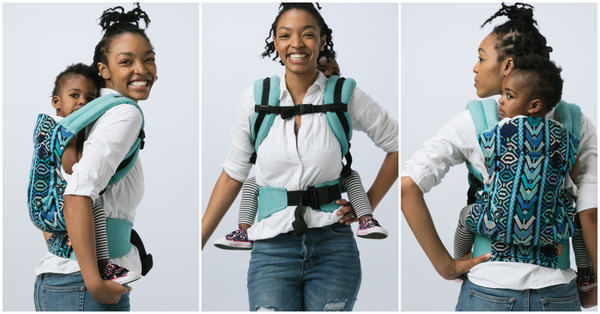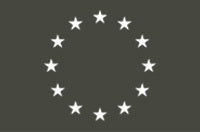
Welcome to Baby Tula’s first installment of Black Voices in US Babywearing. Our goal is to provide a platform for Black babywearing educators to share their thoughts and experiences on babywearing as a modern practice rooted in ancestral knowledge as it relates to their postpartum mentorship and care for birthers. The first voice we will hear from is Jessica Reña who owns Mamas in Color. Jessica is a Navy vet whose life was transformed by the birth of her daughter. If Jessica looks familiar, it’s because her powerful “en caul” waterbirth photos and breastfeeding portraits went viral and have even earned awards. After that, the work to share her love for helping other birthers began right away. Now Jessica is a holistic birth worker and on her way to midwifery school! Babywearing is a natural part of the postpartum experience and so Jessica tackled that too so she could help others. It is clear in everything that she does, that the principal goal is to provide much-needed support for the BIPOC community. From her website: “I am a WHOLE mood and your birth + postpartum period, should be too. I am on a mission to continue to educate, support, and show up for BIPOC birthing folx, every single day. To make safe birthing options accessible to the BIPOC community. Social + reproductive justice is my JAM! Welcome to my protest! ✊🏽”
Let's learn more about Jessica's experience with babywearing:

At first I was skeptical about babywearing
I had no idea that I would wear my daughter. I saw it around me all the time and thought I would probably be the person who drops my baby out of there. I thought, there's no way I know how to tie that properly to make sure my baby is safe. It wasn't until my aunt asked me if I planned on wearing my daughter, and we both busted out laughing about how I'd be like, girl, I almost dropped my baby today; I won't be doing that again. She said, “I think you should do it. I've been watching videos about it, and it looks pretty cool. It's what they do in a lot of African countries.”

Photo credit: @socal.standard
I quickly learned to love wearing my daughter
Personally, babywearing is essential to me – because it helps strengthen the bond between the wearer and the baby. I navigate my life through a PTSD, depression, and anxiety lens daily, and I was terrified of having postpartum depression. I figured I was already predisposed to it, so I wanted to make sure I had every tool I could to try and prevent falling into PPD/PPA.
My daughter is now approaching two years old in a few months, and we are still babywearing. I make a point to gift my favorite carriers to all of my friends who are expecting, and it's an essential element in my doula work.
Being able to carry my daughter close to my heart while still having free hands was a lifesaver. Having my daughter close enough to me to make sure she was still breathing properly, noticing early hunger cues, and getting constant skin to skin gave me a peace I didn’t know was possible as a new parent. And not to mention the intoxicating baby smell giving me all the oxytocin that helps with bonding and keeping PPD/PPA away.
It allowed me to be more present while still managing everyday life things, like taking my dog out for a walk or eating with free hands. It’s life-changing. Having the comfort of knowing that my husband could carry our daughter this way and also get in his bonding time and oxytocin was another plus since I exclusively breastfed.

Now I teach others to wear their baby too.
Babywearing is probably one of my favorite things to introduce to a newly postpartum family. Bringing any type of ease to the postpartum journey is always a win for me, and there are so many amazing benefits. I mean, who doesn’t want that intoxicating baby smell? And we are all super familiar with the benefits of skin-to-skin. However, our society and Western culture still has this odd obsession with separating new postpartum parents and babies. We are all so eager to move on to the next step or the next phase of things, and the postpartum period isn’t revered enough, in my opinion.

So, if you are super eager to get back to your pre-pregnancy routine, you can achieve a lot of that while still bonding with your baby and having free hands. A big portion of postpartum care is self-care, which can feel impossible when you have a new baby but, babywearing helps. Incorporating babywearing into your postpartum care can offer you the best of both worlds.
Babywearing is family-centered. Grandparents, aunts/uncles, older siblings, spouses/partners, and all caregivers can do it. It is truly a multifunctional asset. For example, if a new lactating parent wants to get rest, shower, or just needs a breather but also wants the baby to be held close to someone, they can easily change out a carrier with the next caregiver. This allows for freedom without the worry of putting your baby down in a crib or a bouncer alone. It’s definitely a must-have for new parents.
Want to learn more about Jessica?
Follow her on Instagram.
Visit her website.
Like her Facebook Page.
Support her midwifery school journey.
Beach scene photos courtesy of Socal Standard

